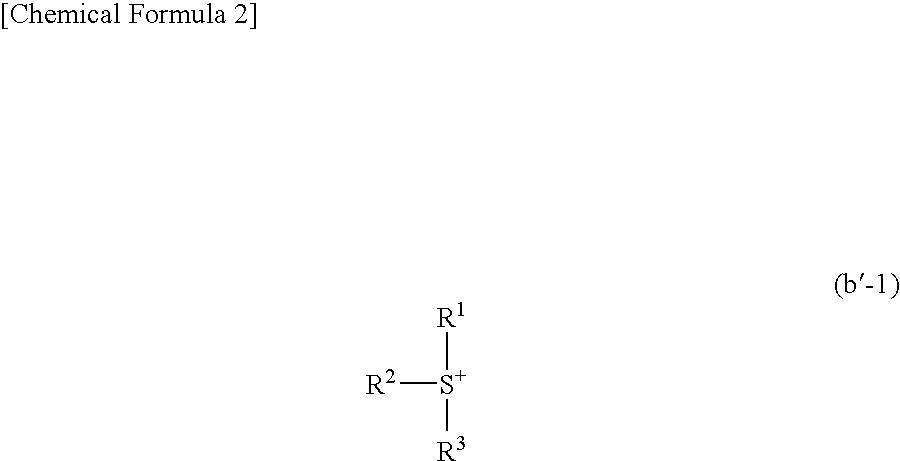Positive resist composition and method of forming resist pattern
a composition and resist technology, applied in the field of positive resist composition and a method of forming a resist pattern, can solve the problems of low resolution of chemically amplified resists using phs-based resin as the base resin component, inadequate transparency, etc., and achieve the effect of suppressing the development of footing and reducing lwr
- Summary
- Abstract
- Description
- Claims
- Application Information
AI Technical Summary
Benefits of technology
Problems solved by technology
Method used
Image
Examples
examples
[0300]As follows is a description of examples of the present invention, although the scope of the present invention is by no way limited by these examples.
[0301]
[0302]Polymers (A)-1 to (A)-3 used in the examples and comparative examples as the component (A) were synthesized in the following manner.
[0303]Taking example of the polymer (A)-1, PGMEA was charged into a flask equipped with a nitrogen inlet, a stirrer, a condenser and a thermometer in a nitrogen atmosphere, and the temperature of the water bath was elevated to 80° C. while stirring the content of the flask.
[0304]Then, a monomer solution obtained by mixing 2,2′-azobisisobutyronitrile (AIBN) as a polymerization initiator, PGMEA and monomers for deriving the respective structural units of polymer (A)-1 (1-ethyl-1-cyclohexyl methacrylate / α-methacryloyloxy γ-butyrolactone / 3-hydroxy-1-adamantyl methacrylate=4 / 4 / 2 (molar ratio)) was dropwise added to the flask at a constant rate over 6 hours using a dispensing apparatus. The resu...
PUM
| Property | Measurement | Unit |
|---|---|---|
| wavelengths | aaaaa | aaaaa |
| wavelengths | aaaaa | aaaaa |
| temperature | aaaaa | aaaaa |
Abstract
Description
Claims
Application Information
 Login to View More
Login to View More - R&D
- Intellectual Property
- Life Sciences
- Materials
- Tech Scout
- Unparalleled Data Quality
- Higher Quality Content
- 60% Fewer Hallucinations
Browse by: Latest US Patents, China's latest patents, Technical Efficacy Thesaurus, Application Domain, Technology Topic, Popular Technical Reports.
© 2025 PatSnap. All rights reserved.Legal|Privacy policy|Modern Slavery Act Transparency Statement|Sitemap|About US| Contact US: help@patsnap.com



